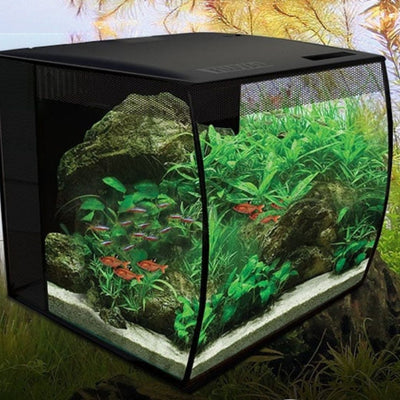The Bureau of Meteorology predicts that we will experience a long, hot summer! On those hot days the sound of trickling or running water can mentally have a cooling effect on us. If you live near the beach or a flowing river, you are lucky enough to have this occurring naturally. If not, the sound of running water in a pond could be the way to go. Most people start off with the best intentions and envisage beautiful clear water with water lilies floating and flowering. Sometimes, however, the appearance of the backyard pond can look more like a moat!
To keep the water clear, a pond or water garden needs to be in balance. This means that the amount of waste and nutrient being produced by organisms in the pond such as fish, frogs and bacteria is consumed by plants and algae. Striking this balance can be difficult and there are a number of factors that influence it. You may want a few fish so you can see them and enjoy them. The pond may be narrow and deep or wide and shallow or in a shaded area that is not conducive to plant growth or you just be a little impatient and just want the water clear all of the time no matter what. If this is the case then you will need a filtration system.
Pond filtration to keep water clear requires three parts and these are a pump to move and aerate the water, filtration media that catches particles and provides a large surface area for nutrient consuming bacteria to colonise and an ultra violet clarifier that clears single cell green algae from the water. This is the type of algae that causes murkiness in the pond.
The Pump
A pump is not a filter, even if it has a sponge on the end of it. This sponge is simply to stop the pump clogging up. Ideally, a pump should be able to handle large particles and deliver these to the filter. Modern pumps use very little power and should be run 24 hours a day as the aeration of the water reduces the amount of CO2 in the water. Like all plants algae uses CO2 to grow so by limiting the amount in the water it's better for both the fish and inhibits algae growth. Most pond plants take their CO2 from the atmosphere so limiting the CO2 in the water has little if any effect on their growth.
The Filter and the Ultra Violet Clarifier (UVC)
The size of the pond will dictate the size of the filter and the size of the pump that you require. Small ponds less than 1500 litres are well suited to an all in one unit that can be submersed in the pond. These units combine the pump, filter media and UVC all in one unit.
Ponds larger than this are best suited to separate filters and pumps. In these situations the pump is located in the pond and the filter outside of the pond. Look for a unit that passes the water from the pond through the UVC first as the dead algae can then be effectively caught by the filter thus returning clean, clear water to the pond.
Many of these units are now pressurised which means that they can buried away from the pond and hidden which means they are effective whilst not affecting the aesthetics of the pond.
Many also feature back washing features so waste and dirty water can be flushed from the filter without the need to open up and empty out the unit. Pond filters and pumps should be cleaned every season and the UVC bulb changed every twelve months to ensure that the filtration is achieving optimum results.
For further information, call in & see us in the store, or email us: admin@weknowpets.com.au
4/72-76 Station St Bowral NSW 2576
PH: 024862 1175
© weknowpets 2018





